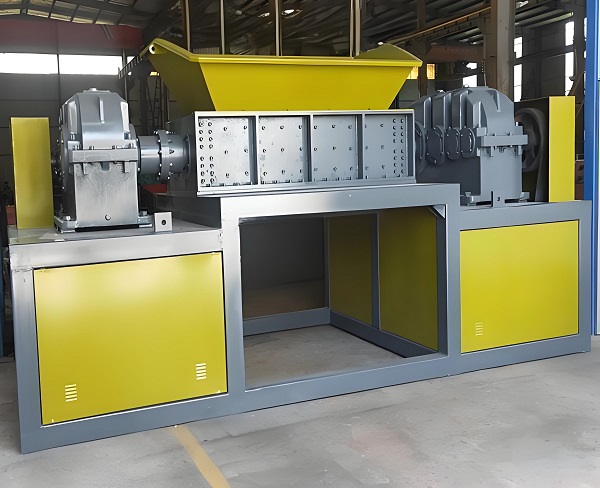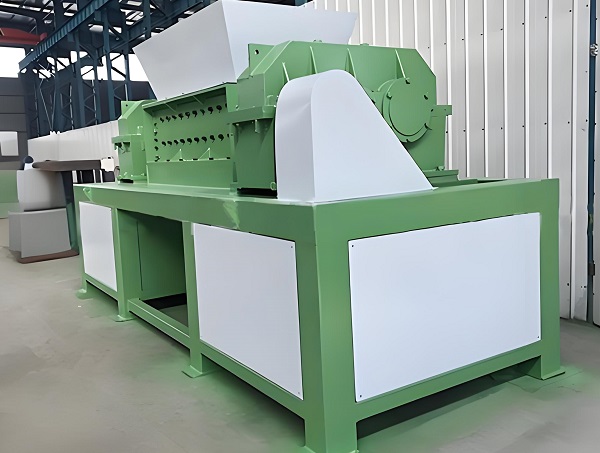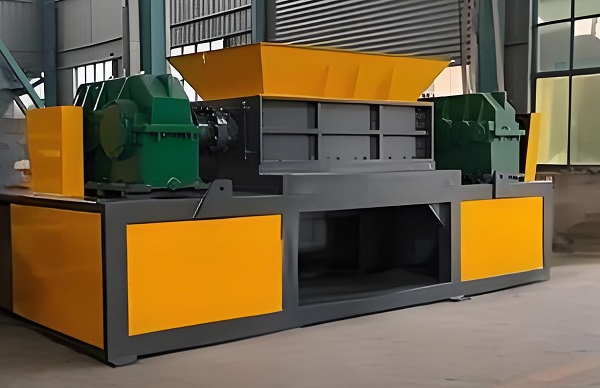Shredders are widely used in waste recycling and garbage disposal. Their primary function is to shred various materials into smaller pieces for subsequent processing or reuse. To ensure the shredder maintains optimal operating condition, prolongs its service life, and reduces the likelihood of failure, proper maintenance and routine upkeep are crucial.
A. Shredder Maintenance

1. Common Faults and Repair Methods
Shredders may malfunction for various reasons during long-term operation. Prompt and accurate diagnosis and repair can effectively reduce downtime.
Motor Overheating: The motor is the power source of the shredder, and overheating is a common malfunction. Excessive motor temperature may indicate excessive load (i.e., excessive or hard material being shredded exceeds the motor's capacity); poor motor heat dissipation, such as a damaged cooling fan or clogged cooling vents; or damaged motor bearings. If the motor is overheating, stop the machine and inspect it. If the load is excessive, reduce the material input or process hard materials. If heat dissipation is poor, clean the cooling vents and replace any damaged fans. If the bearings are damaged, replace them promptly. Poor shredding performance: This manifests as uneven or excessively large shredded material. This may be due to severe blade wear, resulting in reduced cutting capacity, or improper blade gap adjustment. Excessive blade wear results in coarse shredded material, while a narrow gap may increase the load on the equipment. In this case, check the blade for wear and replace it if severely worn. Readjust the blade gap based on the material's characteristics.
Unusual noises during operation: Unusual banging or squealing noises may be caused by hard objects such as metal mixed in the material, colliding with the blades. It may also be due to worn or loose bearings, increasing friction between components, or a loose or misaligned drive belt. In this case, stop the machine immediately, remove any hard objects from the material, inspect the bearings, and replace or tighten any worn or loose ones, and adjust the tension and position of the drive belt.
Material jamming: Material becomes stuck in the shredder chamber, causing the equipment to malfunction. This is usually caused by the input of material that is too large or too much, exceeding the shredder chamber's capacity. It may also be caused by the material containing sticky substances that become entangled in the blades. At this point, shut down the machine and clean the material in the shredder chamber. Check and remove any sticky materials. Afterward, carefully control the amount and size of material fed into the shredder.
2. Inspection of Key Components
Blades: Blades are the components of the shredder that come into direct contact with the material and wear quickly. Regularly inspect blade wear for chipping, cracks, and other signs. When blade wear reaches a point where it affects shredding performance, replace them promptly. When replacing blades, select blades that match the original model. Ensure they are securely installed and the gap between the blades is adjusted appropriately.
Bearings: Bearings support the shredder's rotating components, and their performance impacts the machine's operational stability. Regularly inspect bearings for abnormal noise, overheating, oil leakage, and other signs of damage. Replace any bearings promptly. Use qualified bearings and apply a generous amount of grease during installation.
Drive System: This includes belts, chains, gears, and other components. Check the belt for looseness, cracking, or wear. If loose, adjust the tension; if damaged, replace. Regularly check the chain for tension and lubrication, refill lubricant promptly, and replace any broken or severely worn parts. Check the gears for wear; if severely worn or broken, replace them.

B. Daily Maintenance of the Shredder
1. Pre-Startup Inspection
A comprehensive pre-startup inspection ensures safe and stable operation of the shredder.
Check the bolts at all connections, such as the frame, motor, and blade holder, for tightness. Tighten any loose bolts promptly to prevent components from loosening and falling during operation.
Check the blades for sharpness, wear, chipping, and proper clearance between blades. Adjust or replace if necessary.
Check the lubrication system for sufficient lubricant at all lubrication points and ensure the oil quality is good. This ensures the lubrication system is functioning properly and reduces friction between components. Check the electrical system for damaged or aged wires, ensure connections are secure, and ensure switches and buttons are responsive and reliable to ensure the system is safe and functioning properly.
Clean the shredder chamber and remove any remaining material or debris to prevent damage when the machine is turned on.
2. Monitoring During Operation
Carefully monitoring the shredder's status during operation can help identify potential problems.
Observe the machine's operating sound. Normal operation should be smooth and uniform. If any abnormal noise is detected, immediately stop the machine for inspection.
Monitor the temperature of the motor, bearings, and other components. Check by touch or with a temperature measuring instrument to ensure they are within the normal range. Generally, motor temperatures should not exceed 60°C and bearing temperatures should not exceed 70°C.
Pay attention to the material input, ensuring it is evenly loaded and avoiding over- or under-loading. Observe the shredding performance and make adjustments if any abnormalities are detected.
Check the machine's vibration. Excessive vibration may indicate loose components or imbalance, requiring immediate inspection.
3. Post-Stop Maintenance
Performing proper maintenance on the shredder after shutdown can effectively extend its service life.
Clean materials and debris from inside and outside the equipment, especially any residual material on the shredding chamber, blades, and transmission components to prevent residual material from corroding the equipment or affecting subsequent operation.
Lubricate and maintain all lubrication points, adding or replacing lubricating oil and grease as required to ensure proper lubrication of all components.
Inspect the condition of key components such as blades, bearings, and belts, keeping records. Develop a replacement plan for components that are worn but not currently affecting operation.
Clean the equipment surface to remove dust and oil, and keep it clean. Also, check that the equipment's protective devices are in good working order and repair any damage promptly.

4. Maintenance Precautions
Operators must receive professional training and be familiar with the shredder's structure, performance, and operation. They must strictly follow the operating procedures during operation and maintenance. Illegal operation is strictly prohibited.
Develop a reasonable maintenance plan and regularly inspect, maintain, and repair the equipment. Keep maintenance records, including maintenance time, content, and replaced parts, for easy traceability and analysis. When replacing parts, choose qualified, model-matching parts. Avoid using inferior parts, which can affect equipment performance and safety.
When performing repairs and maintenance, always disconnect the power supply and ensure the equipment is shut down to prevent safety incidents.
For vulnerable parts, maintain a supply of spare parts so that damaged parts can be replaced promptly, minimizing downtime.
Shredder repair and routine maintenance requires ongoing work. Only by paying attention to every detail and promptly addressing any equipment issues can you ensure efficient and stable operation of the shredder and provide strong support for production.